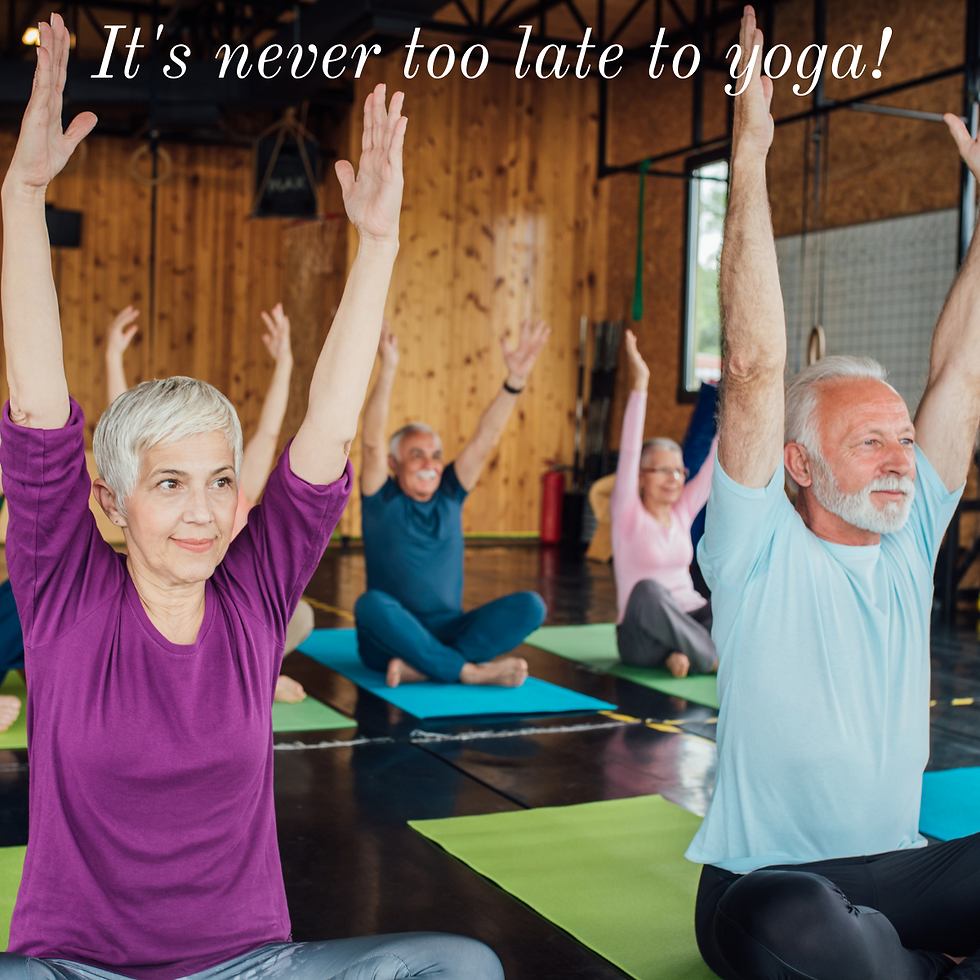- richard
- Mar 14, 2021
- 2 min read

Aging is an inevitable process, and everyone must go through it regardless of the state of health they possess. For some it is a pleasurable experience as they lead healthy lives and age with grace without bearing too many health issues, but for others it is the most difficult phase of life when they are faced with health challenges, medications and treatments that hinder their lifestyles. Regular yoga practice can aid in leading a healthy life and if started early in life can also slow down the process of aging. Regardless of age, yoga is a practice that can immensely improve the overall wellbeing of an individual at any age, and as you grow older, you have more free time to start taking better care of yourself, so it is never too late to try some yoga.
I call yoga ‘technical wellbeing’ anyone taking up this practice can benefit from yoga in terms of reducing or eliminating certain health conditions such as arthritis, incontinence, high blood pressure and osteoporosis and also encountering an overall sense of wellbeing. Regular yoga practice increases flexibility, stamina, energy levels and at the same time helps to conquer a number of ailments.
For people who begin yoga at a later stage in life, it is important to bear in mind that they need to apply the movements according to their own limitations and body strength. Certain yoga postures are beneficial for improving the nervous system and can help reduce a number brain and heart conditions. At the same time, certain breathing techniques assist in clearing blocked air passageways and can help to avoid respiratory illnesses. In addition, the breathing exercises are especially useful to relieve stress levels and utilise the lungs to its full capacity in turn improving the air and blood flow throughout the body.
Yoga is a holistic approach to life and provides a good workout, great health and promotes longevity. Yoga sessions leave the yogi feeling rejuvenated and energized in body, mind and spirit. It also improves balance, eliminates toxins, increases oxygen levels, improves flexibility, reduces stress and cures insomnia by relaxing the mind and body. Yoga can lead you through a wholesome life regardless of the age you begin to practice it.
When beginning yoga at a later stage in life, it is crucial to consult your doctor about any restrictions that are required based on your health conditions. It is also important to know that certain postures are not recommended for people beginning yoga practice at an older age.
If this is you, please give me a call to learn more - I am in my 60th year and loving how yoga makes me feel, better each year!

.png)







